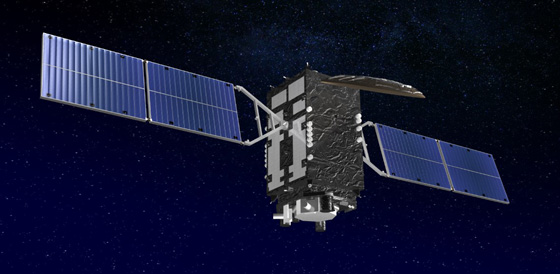News
Japan's Own GPS System to Start Full-Scale Operation-High Expectation for Ultra Accurate Location Information Updated in January 2019
From November 1, 2018, Japan's own satellite-based positioning system started operation under a 4-satellite system. Japan is also using American GPS satellites, but with the new QZSS (Quasi-Zenith) satellite system named MICHIBIKI, incorrect location display caused by faulty signal calculations in mountainous regions or high-rise buildings, could be improved greatly. Under the new system, precise location can be determined in a wide range of areas throughout Japan.
MICHIBIKI's first satellite (QZS-1) was launched in September, 2010. In June, August and October of 2017, the second (QZS-2), third (QZS-3) and fourth (QZS-4) satellite were launched in sequence. In the sky between Japan and Australia, the first, second and fourth satellites are traveling in a quasi-zenith orbit, which looks like the figure 8. The third satellite is in a geostationary orbit, traveling above the Earth's equator. The successful launch of the fourth satellite has completed Japan's own GPS system. With the new system in place, many tests and trials have been going on.
With the operation of four satellites, at least one satellite will always travel right above Japan, according to the National Space Policy Secretariat of the Cabinet Office. Up to now, signal reception from the American GPS satellites were interrupted by skyscrapers or mountains. Should any anomalies occur to the American GPS, social and economic activities in Japan could have faced dire consequences. With the new national positioning system in place, Japan has one less concern.
Moreover, by installing a special receiver which can catch MICHIBIKI's reinforced signal, the error range be reduced to 6-centimeters. Such improvement in technology could be applied to diverse fields requiring precise location: automatic driving, unmanned farming machines, packet delivery by drones and so forth.
However, such receivers are still too large and expensive. They cannot be installed onto smartphones yet. In order to benefit from ultra-accurate positioning information, downsizing and cost reduction of the receiver is a must.
In Japan's basic space plan of April 2016, the government decided to expand the MICHIBIKI Quasi-Zenith satellite system (QZSS) to include 7 satellites in total so that by year 2023, Japan would not have to depend on the American GPS at all. The basic plan announced that three more satellites will be launched by 2023. Apart from utilizing MICHIBIKI for commercial use of space, the government wants to optimize it for disaster prevention. MICHIBIKI can contribute in transmitting urgent evacuation warnings or information on disaster victims.
On November 1, Prime Minister Shinzo Abe attended a ceremony in Tokyo celebrating the launch of MICHIBIKI's fourth satellite: “40 years have passed since the United States launched their GPS satellites. Today, we can no longer do without GPS in our everyday life. A new page in history is being turned by MICHIBIKI. With the world's first satellite positioning service that provides extremely accurate location information with an error range of several centimeters, the future-society we dreamt of is becoming a reality.”
QZSS Quasi-Zenith Satellite System
https://qzss.go.jp/en/












